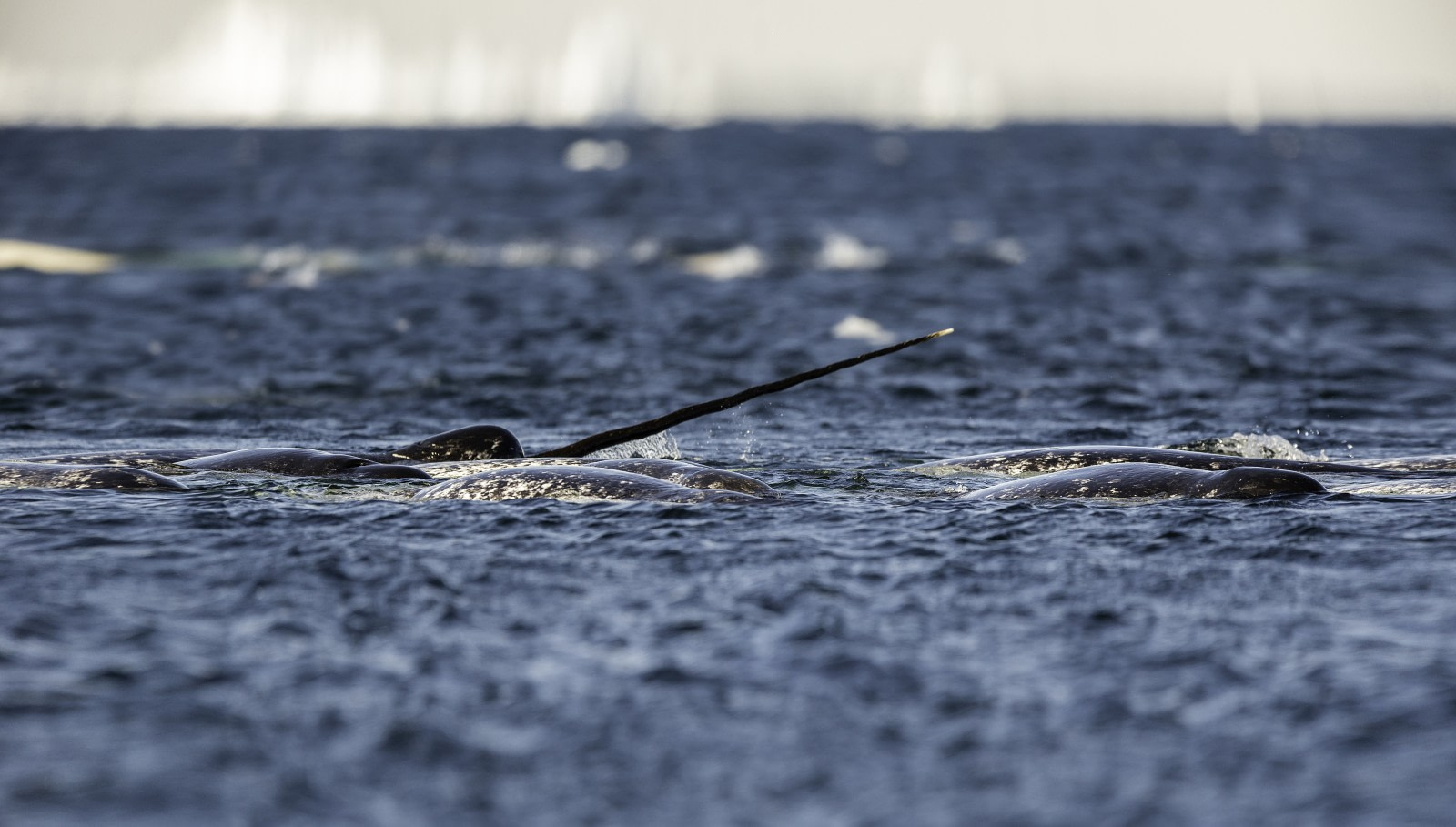Name: Narwhal, Narwhale (Monodon monoceros)
Length: 4 to 5.5 metres (excluding tusk). The males' tusks can grow from 1.5 to 3 metres in length.
Weight: 800 to 1,600 kg, males being larger.
Location: Arctic.
Conservation status: Near Threatened.
Diet: Fish, shrimp, cuttlefish, squid.
Appearance: Grey, mottled. No dorsal fin. Male Narwhal have a single long tusk (sometimes two).
How do Narwhals feed?
In winter, Narwhals feed on benthic fish in shallow bays. During Arctic summers, they move to open ocean waters, adding fish like cod and halibut to their diet. They dive up to 1,500 metres and stay underwater for up to 25 minutes, repeating these dives up to 15 times a day. Narwhals likely suck in their prey due to underdeveloped teeth.
Are Narwhals social?
Narwhals form groups of 5 to 20 individuals, including mothers with young and bull males. In summer, these groups can merge into larger groups of 500 to over 1,000 whales.
How fast do Narwhals swim?
Narwhals can swim up to 160 km per day during migration, averaging about 6.5 km per hour.
What are Narwhal birthing rituals like?
Male Narwhals mature at 12 years, females at 7 years. Females give birth every three years, with mating season from April to May. Gestation lasts 14 months, resulting in a single calf born in June. Calves are 1.5 metres long and nurse for 20 months.
How long do Narwhals live?
Narwhals can live up to 50 years in the wild.
How many Narwhals are there today?
There are about 75,000 Narwhals alive today.
Do Narwhals have any natural predators?
Younger Narwhals are preyed upon by Polar Bears and Killer Whales. They can also get trapped under ice if they delay migration.
7 Wonderful Narwhal Facts
- The Narwhal's closest relative is the Beluga Whale, both part of the Monodontidae family.
- The Narwhal's tusk is actually a canine tooth.
- Unlike most whales, the Narwhal's neck is jointed, allowing head movement.
- The name "Narwhal" comes from the Old Norse word "nár," meaning "corpse," due to its mottled grey appearance.
- The scientific name Monodon Monoceros means "one-tooth one-horn" in Greek.
- There is possible evidence that Narwhals and Belugas occasionally mate.
- The tusk is a sensory organ, allowing Narwhals to "taste" their environment for food and mating cues.






Related Trips



Amazing Greenland

Tracking Greenland’s Wildlife from Space

Peaks, Fjords, and Auroras: 14 East Greenland Attractions

Six Seal Species You Might See On Your Greenland Cruise

The Arctic Hare: Easter Bunny

Discover the Scoresby Sund Fjord System in East Greenland

Greenland: Where the Kayak Was Invented

Ice streams and lakes under the Greenland Ice Sheet

Scoresby Sund: the Greatest Greenland Adventure

Kayaking In Greenland

10 Traits of Post-Ice-Age Greenland

5 Misconceptions You Might Have About Greenland

Not Eskimos: 10 Enlightening Facts About the Inuit

Traditional Lifestyles of the Inuit

How and When Did Greenland Become Covered in Ice?

The World Is Changing for Greenland's Native Inuit People

Under the Greenland Ice Sheet

Harp seals harping on in Greenland

Why You Should Visit Greenland: 11 Things to See, Do, and Explore






 20 Days / 19 Nights
20 Days / 19 Nights
